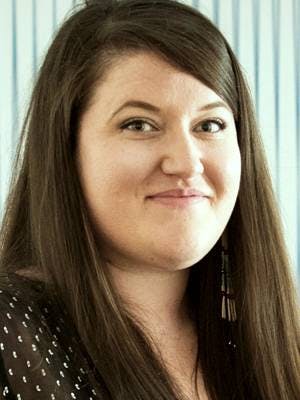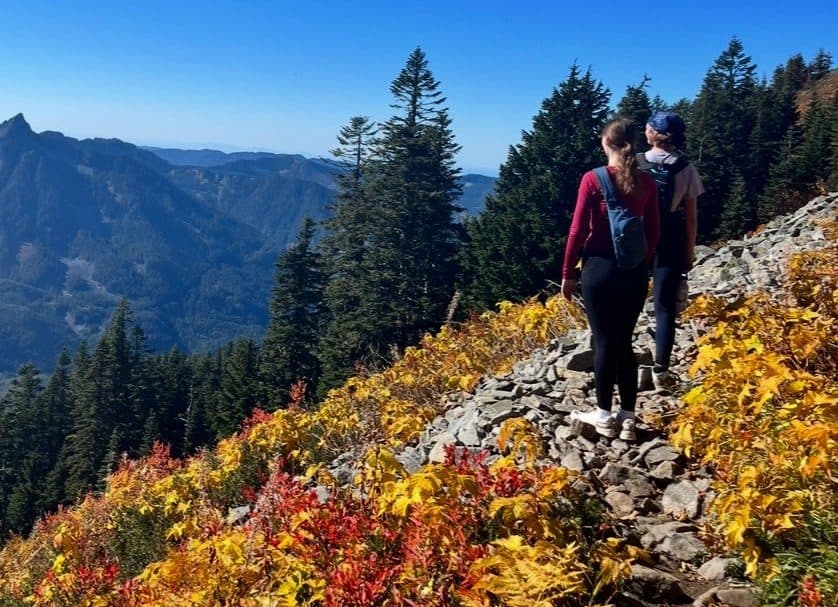 Kerr Fellow, PhD Student for Native American Art History at the University of Oklahoma
Kerr Fellow, PhD Student for Native American Art History at the University of Oklahoma
Norman, Oklahoma
Art History major 2011
When Chelsea Herr moved from California to attend Seattle Pacific University, more than the rain stood out about her new surroundings. She noticed the presence of Pacific Northwest Coast Native art all around the city, especially public pieces such as the totem poles near Alki Beach. It fascinated her that precious works of art would be exposed to the elements, in an open space so that large groups of people could experience their beauty.
“It’s setting a pattern and a precedent that should happen more,” says Herr, who is enrolled in the Choctaw Nation of Oklahoma.
As an SPU student, Herr took full advantage of Seattle’s art scene, especially the galleries and storefronts downtown and in Pioneer Square that showcased Native American art. At the same time, she was studying visual communication at SPU. Her courses with Associate Professor of Art Katie Kresser opened up a path to connect her heritage with her studies.
“I knew I wanted to do something that would benefit my people – not just my tribe, but native people as a whole. For a lot of people that might be more political, more activist,” she says. But for her, art was a way to honor hidden beauty and to recover what has been pushed aside.
“Art is a way to communicate and to empathize, especially across cultural boundaries,” she says.
With an undergraduate degree in visual communication and art history from Seattle Pacific, Herr pursued a master’s in art history at the University of California Riverside. Now, she is in her second year of earning a doctorate at the University of Oklahoma. She holds the Kerr Fellowship at the Charles M. Russell Center for the Study of the American West and is also a research assistant for the center’s director. She writes about contemporary artists for publications such as The Santa Fean, is involved in the local art scene, and is active with the Indigenous Graduate Student Alliance on the University of Oklahoma’s campus.
Herr chose the program in part because it is one of the few doctoral programs to offer a specialization in Native American art, but also because of the opportunity to live about a two-hour drive from Choctaw tribal lands.
“I wanted to feel rooted in a location where I had history,” she says. In the summers, growing up, Herr would travel from California to spend time with her grandmother, who lived on Choctaw land. They would go to the council house grounds and participate in community events. Her grandmother taught her to be proud of her heritage but didn’t talk much about the past, and it was only later that Herr learned that her grandmother had to hide her Native American heritage to survive as a young person when she moved west during the Dust Bowl catastrophe of the 1930s.
“It was a point of shame and a point of survival,” Herr says. “I thank God that for my mom’s and my generation that doesn’t exist. There are still issues in Indian country, but we don’t have to fear for our lives and our families like my grandma did.”
In her studies of contemporary Native artists, Herr sees work that can offer perspective, start conversations about painful injustices of the past, and also speak into current issues. She highlights, as an example, a mural by Cherokee/Creek/Osage artist Yatika Starr Fields created on the Plaza Walls in support of the Standing Rock Sioux action to protect clean water and sacred sites in North Dakota.
The ultimate goal of her studies is to enable both Native and non-Native people to better understand “indigenous cultures and lifeways.”
Although Native American art is frequently displayed in museums, those art objects aren’t always displayed in a way that honors their context, beauty, and complexity – or in a way that recognizes that art as a part of a vibrant, living tradition.
Herr’s work is perfectly positioned to change that, says Kresser. “Chelsea is poised to be a major voice in the field going forward, to make an impact on modern American art.”
Herr points to recent major exhibitions of Native art at the Seattle Art Museum and the Autry Museum of the American West as significant steps forward. When she completes her doctoral work, she hopes to work for a museum to help steward Native art for the public.
“I personally believe it’s not just about healing ourselves, but about healing our nation,” she says.
— Hannah Notess

How does your time at SPU connect to the work you’re doing today?
I took to heart SPU’s motto, “Engaging the Culture, Changing the World.” As an art historian, I believe that one of the purest forms of engaging any culture is visual art, and it has the potential to change the world. My hope is that through specializing in Native American art history, I can help build a foundation for non-Native peoples to better understand and recognize Indigenous cultures and lifeways, and through that foundation, there can be healing and reparation on a large scale.
Who made a difference in your SPU education?
My major advisor, Dr. Katie Kresser, respected and encouraged each of her students, and she held us to a high standard. Her dedication to her students helped me to realize my passion for art history, and her mentorship improved my academic performance, as well as my self-confidence. Dr. Kresser was always willing and eager to listen to students ideas and questions, which is a vital component to any college student’s success.
What advice do you have for students about life after graduation?
Don’t be afraid to do what you love. If you feel called to a particular field or profession, then you need to allow yourself to follow that calling.




